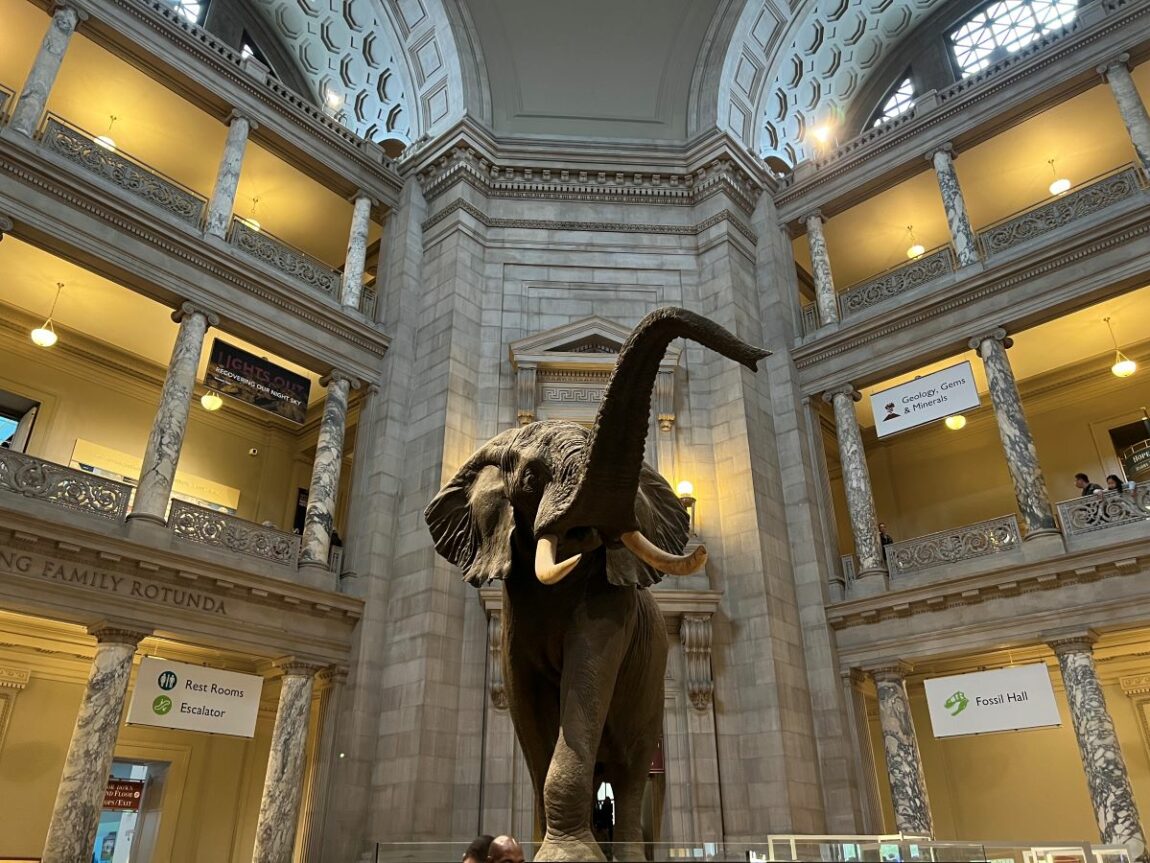
Discover the natural wonders of the world through a collection of 148 million science specimens and artifacts.
The National Museum of Natural History has a collection of 148 million science specimens and artifacts which aims to tell the story of our planet. What sets this museum apart is the level of hands-on experience, where you can get a true sense of how the environment and humans interrelate with each other. Through showcasing dinosaur fossils, rare gems, human origins and replicas of whales, and other marine life, the museum aims to educate; ultimately, letting us discover the natural world.
Centrally located in Washington, DC on the National Mall, the Museum of Natural History is the most visited of the Smithsonian museums and welcomes millions of visitors every year. This museum is huge – comparable to the size of 18 football fields. However, the exhibits are so interesting and fascinating that you won’t feel overwhelmed. Obviously, dinosaur bones call for families and school trips so it’s always busy. We were there at the end of the day though and it wasn’t that bad.
What to do
There are several interesting exhibits and permanent exhibitions – here are some of your favorites.
Hope Diamond: Weighing 45.52 carats (yep, you read it right) and featuring a grayish-blue color, the Hope Diamond made its way from a mine in India, to the court of Louis XIV of France, merchant houses and to the homes of the American elite. So how much is the Hope Diamond worth? Probably millions! This iconic item is rumored to be cursed after several individuals have gone to misfortune after possessing it. However, research has shown that this curse was made up.
The rotunda: As you enter the National Museum of Natural History you will be greeted by Henry, an 11-ton and 13 foot tall African Bush elephant. The rotunda, designed in the Beaux-Arts style is a good starting point for your visit where you will find the information desk along with information about the African elephant ecology, and the threat of poaching. Here you can also purchase tickets to the Butterfly Pavilion.
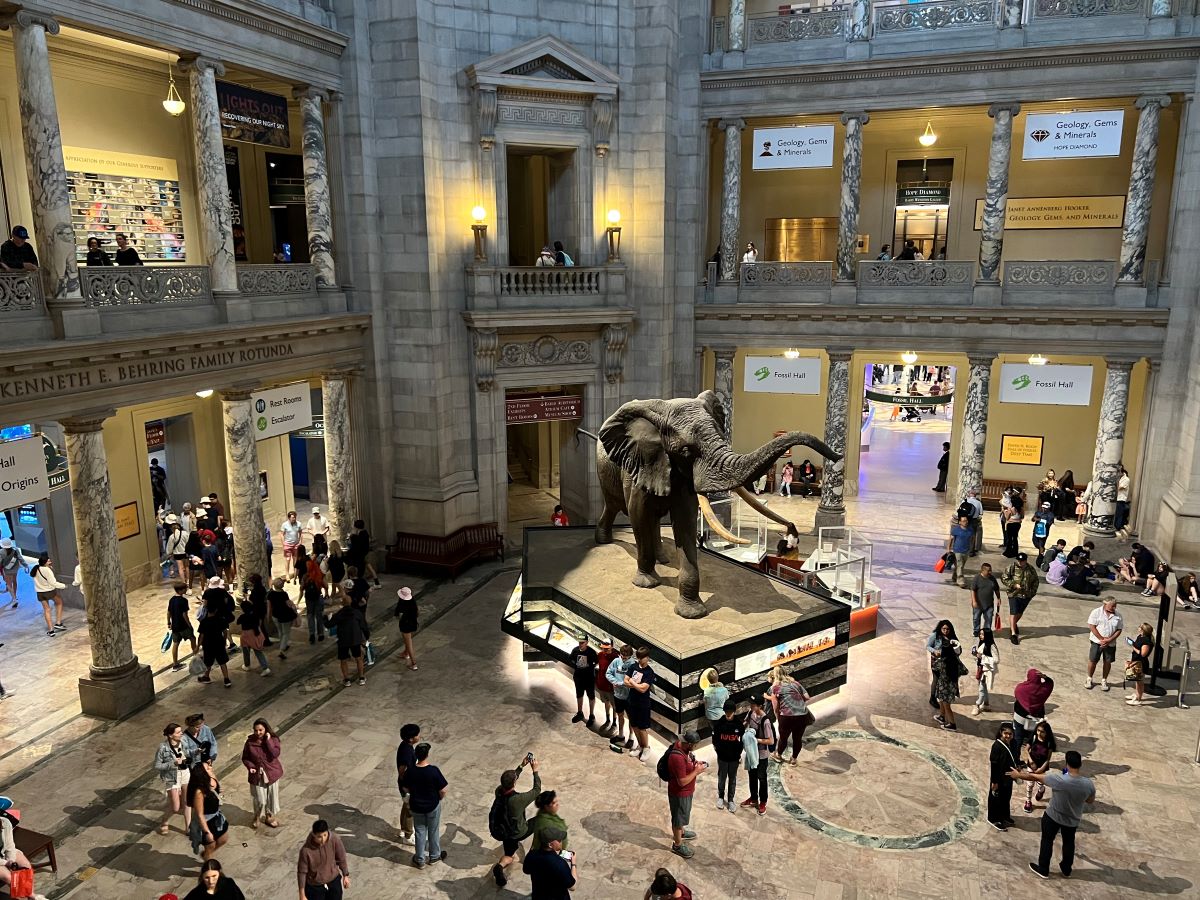
The rotunda. National Museum of Natural History. Washington DC. Credit: Carry on Caro
David H. Koch Hall of Human Origins: In this 15,000-square-foot gallery you can get a closer look at the human origins over the past 6 million years. In this exhibit, discover stories of extinction and survival, compare five early human skulls to see how our braincases and faces have evolved, and visit a station where you can see how you’d look like as an early human. You can even email yourself a copy so you can show it to your friends!
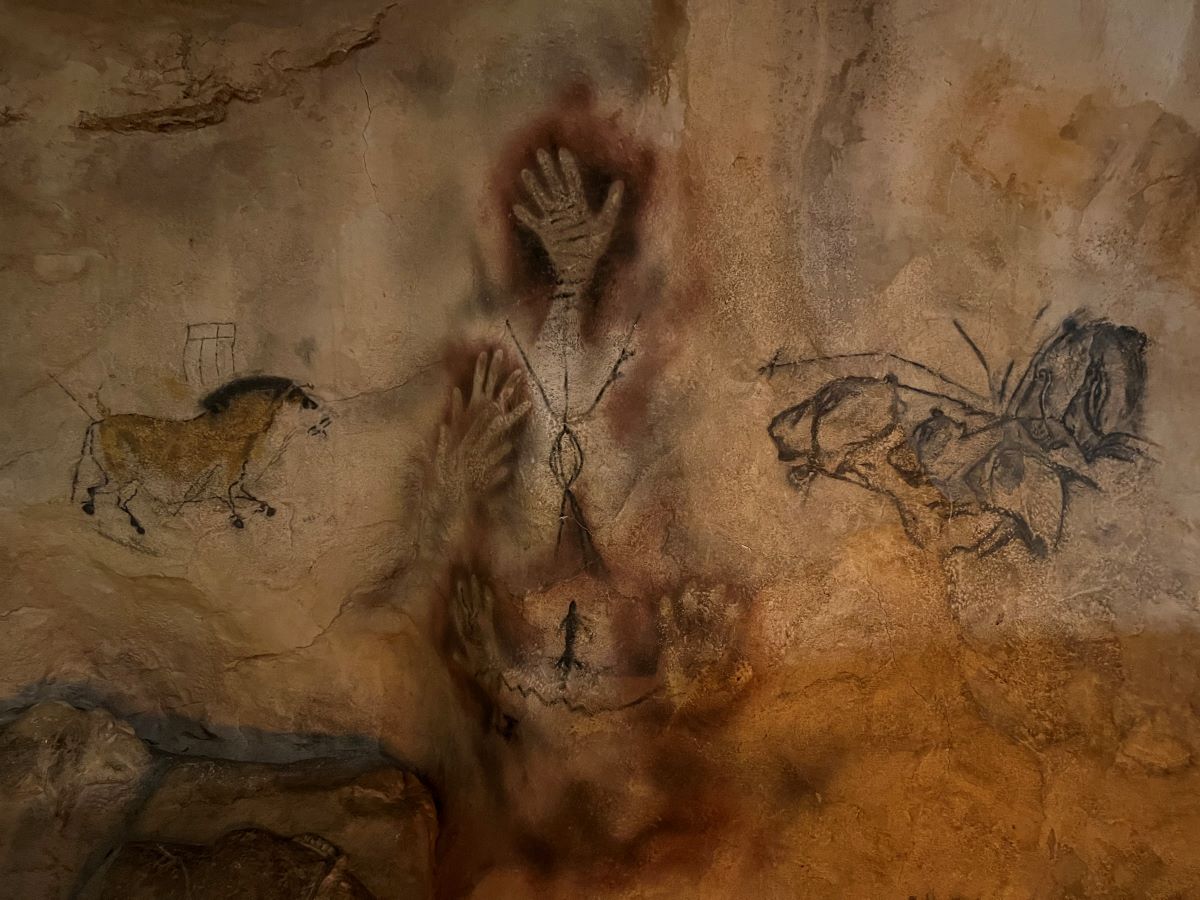
National Museum of Natural History. Washington DC. Credit: Carry on Caro
David H. Koch Hall of Fossils: This gallery features 700 specimens, including Tyrannosaurus rex and triceratops dinosaur. This collection explores how Earth’s past is not only connected to our present but also informs our future. The David H. Koch Hall of Fossils will make you explore ancient ecosystems and also view the evoluation of both plant and animal life. This exhibit is perfect for those of you who are dinosaur lovers – my husband is one, and it took us a while to be able to move on to another gallery (sigh!).
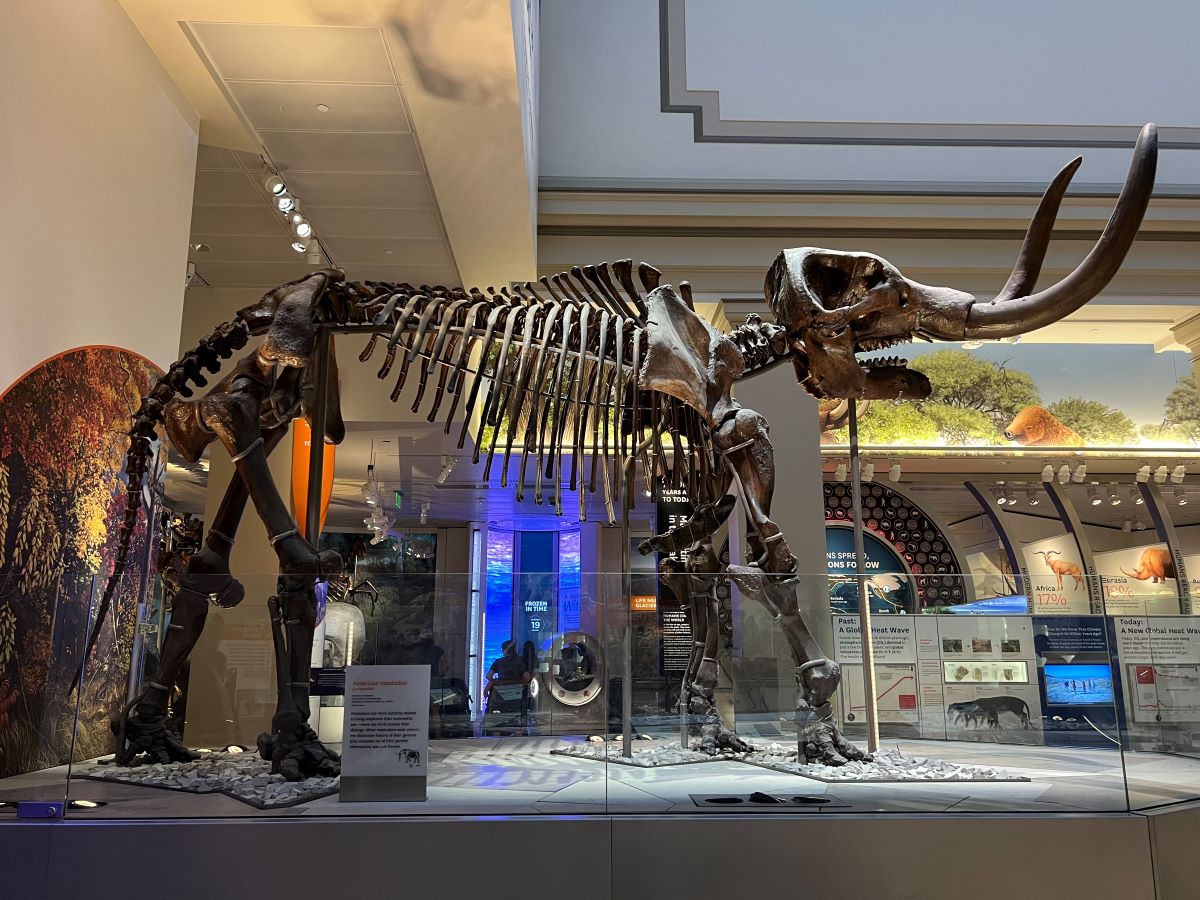
National Museum of Natural History. Washington DC. Credit: Carry on Caro
Eternal Life in Ancient Egypt: Another of my husband’s favorites. The Eternal Life in Ancient Egypt exhibition includes 3 human and 16 animal mummies along with ceramics, tools, and jewelry excavated from Egyptian ancient tombs. Ancient Egyptians firmly believed death marked the beginning of a journey to eternal life and a person could not reach the afterlife if their bodies did not survive, this is why they persevered the bodies of the deceased by creating mummies.
The butterfly pavilion: To enter the butterfly pavilion you need to pay a small fee. However, tickets are free on Tuesdays on a first come, first served basis. Here you can explore how both plants and butterflies have evolved through the years; you will also be able to walk among boatloads of tropical plants. Get close and personal with a large number of butterflies as they are flying freely around the pavilion.
Bone Hall: The skeletons on display in the Bone Hall have been available since 1881 in what today is known as the Arts and Industries Building. These skeletons represent a vast collection of every major group of vertebrate animals. Oh, and don’t forget to look up to observe a skeleton of a gray whale hanging from the ceiling.
The Sant Ocean Hall: This is the largest exhibit in the museum. With 674 marine specimens and models and video, it provides an opportunity for visitors to explore the ocean’s life
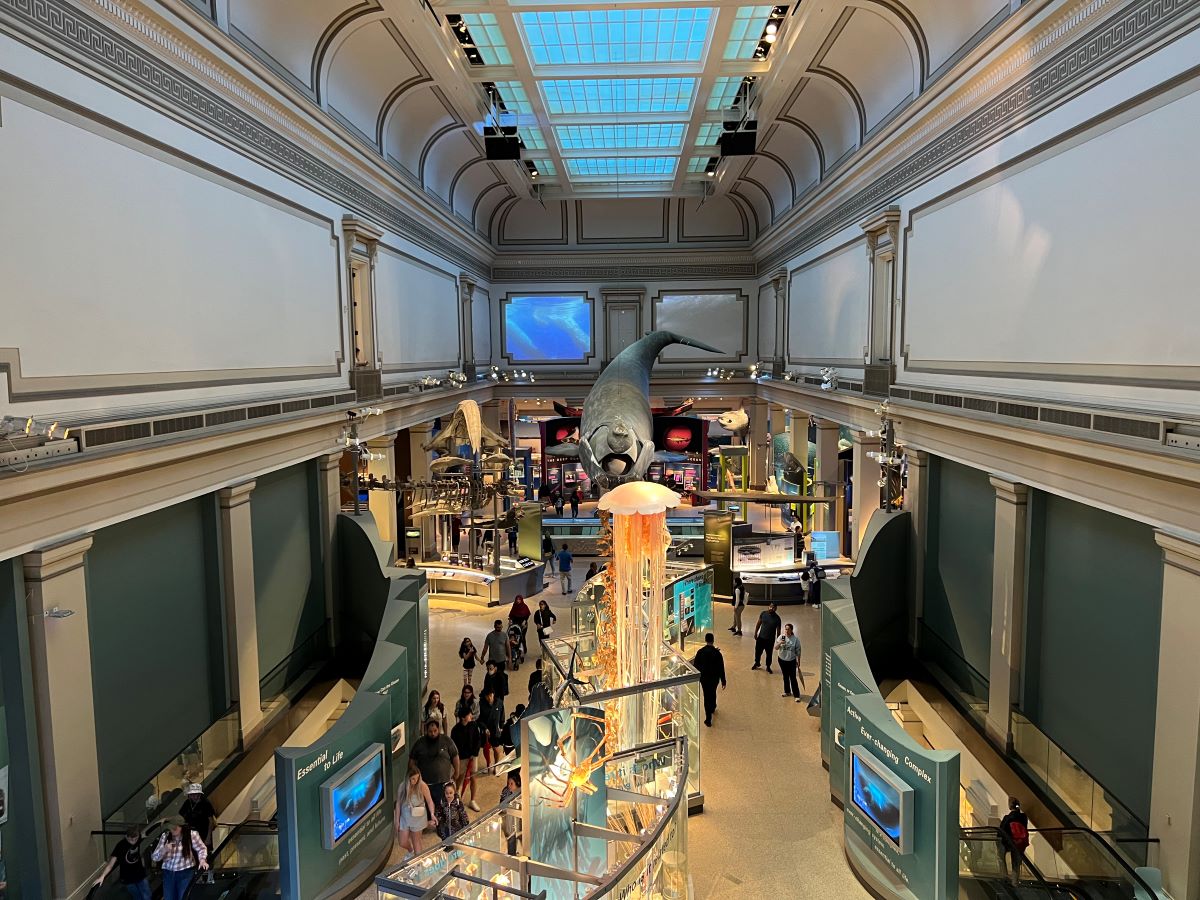
National Museum of Natural History. Washington DC. Credit: Carry on Caro
How to get to the National Museum of Natural History
You can enter the museum either from the National Mall on Madison Drive or Constitution Ave. The closest metro stations to the museum are:
- Federal Triangle Metro station, located on the Blue, Orange, and Silver lines
- Archives/Navy Memorial station on the Green and Yellow lines
- Metro Center station on the Red line.
You can also drive but please note that finding parking can be challenging, especially during the weekends.
How much time do you need at the National Museum of Natural History?
Being so large and with so many exhibits you can spend half a day easily. However, we think that 2 hours is enough to see the most interesting exhibits. If you want to get a map to get you oriented note that they you will have to pay a small fee. There is also an online version if you don’t want to pay for it.
Opening times and entrance fees
The National Museum of Natural History is open 7 days a week from 10:00 am to 5:30 pm except on December 25. As with other Smithsonian museums, entrance is free of charge.
We are part of several affiliate programs including Viator and Amazon which means that we will earn a small commission at no extra cost to you if you make a purchase through the links included in this post.
